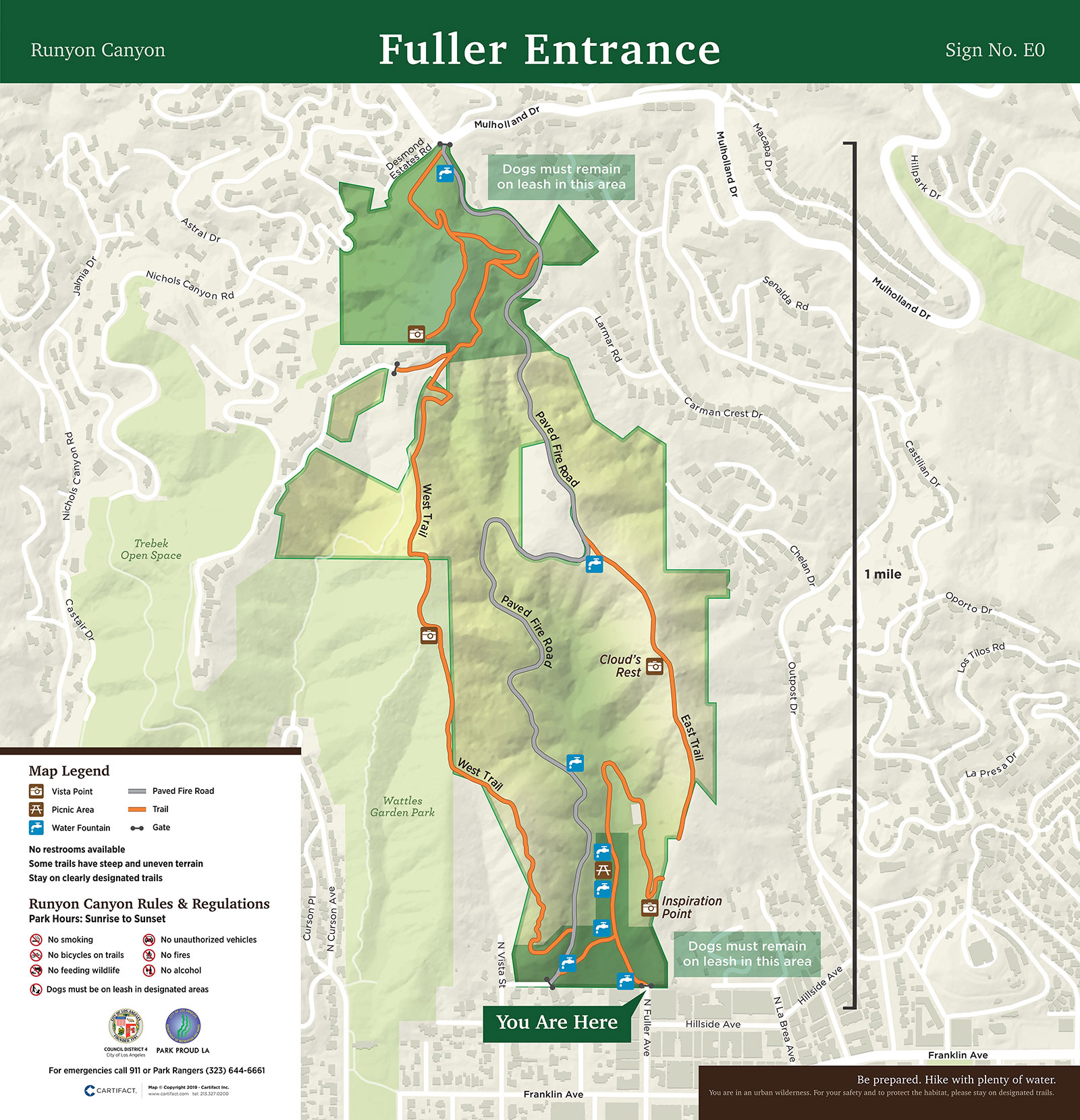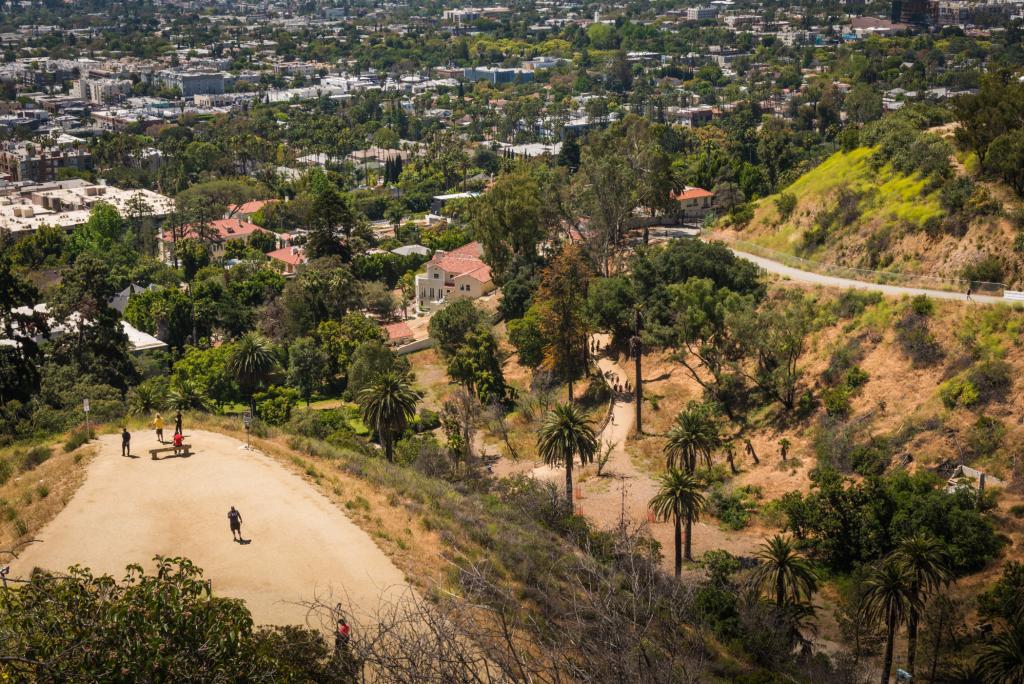Runyon Canyon Fire: A Comprehensive Guide To Understanding The Blaze And Its Impact
Runyon Canyon Fire has become a significant concern for residents and visitors in Los Angeles. This fire not only threatens the natural beauty of the area but also poses risks to the community. Understanding the causes, effects, and management strategies is crucial for anyone interested in environmental safety and conservation.
Runyon Canyon is one of the most iconic hiking spots in Los Angeles, attracting thousands of visitors each year. However, the threat of wildfires looms large, especially during dry seasons. This article aims to provide a detailed overview of the Runyon Canyon Fire, its history, causes, and the measures being taken to mitigate its impact.
By delving into the specifics of the Runyon Canyon Fire, we hope to equip readers with the knowledge needed to protect themselves and the environment. Whether you're a local resident or a nature enthusiast, this guide will offer valuable insights into wildfire management and prevention strategies.
Read also:Kai Razy Nude Exploring The Controversy And Unveiling The Truth
Table of Contents
- Introduction to Runyon Canyon Fire
- History of Runyon Canyon Fire
- Causes of the Fire
- Effects on the Environment
- Community Impact
- Fire Management Strategies
- Prevention Tips
- Recovery Efforts
- Statistics and Data
- Conclusion
Introduction to Runyon Canyon Fire
Runyon Canyon Fire is a recurring issue that affects the scenic landscape of Los Angeles. The area, known for its breathtaking views and diverse wildlife, often becomes a hotspot for wildfires during the dry months. This section explores the significance of Runyon Canyon and why it is vulnerable to such fires.
Runyon Canyon Park spans over 160 acres and is a popular destination for hiking, jogging, and dog walking. Its proximity to urban areas makes it an integral part of the city's green spaces. However, this also increases the risk of wildfires spreading rapidly due to human activity and environmental factors.
History of Runyon Canyon Fire
The history of Runyon Canyon Fire dates back several decades. Notable incidents have occurred periodically, with some causing significant damage to the park and surrounding areas. Historical records indicate that wildfires in this region are influenced by seasonal changes, vegetation patterns, and human intervention.
In recent years, the frequency and intensity of fires have increased, raising concerns among environmentalists and policymakers. Efforts to document and analyze past incidents have led to improved fire management practices and public awareness campaigns.
Causes of the Fire
Understanding the causes of Runyon Canyon Fire is essential for effective prevention and management. Both natural and human factors contribute to the ignition and spread of wildfires in this area. Below, we explore these causes in detail:
Natural Causes
- Dry weather conditions create an ideal environment for wildfires to ignite and spread.
- High winds can carry embers over long distances, increasing the likelihood of fire outbreaks.
- Natural vegetation, such as dry grass and shrubs, acts as fuel for fires during the dry season.
Human Causes
- Unattended campfires and barbecues are common culprits of human-induced fires.
- Littering, particularly cigarette butts, can spark fires under the right conditions.
- Arson and intentional acts of vandalism also contribute to the occurrence of wildfires.
Effects on the Environment
The Runyon Canyon Fire has profound effects on the local ecosystem. Vegetation loss, soil erosion, and habitat destruction are some of the immediate consequences. Additionally, the fire can disrupt the balance of the ecosystem, affecting wildlife populations and biodiversity.
Read also:Penny Lane Nude A Comprehensive Exploration
Efforts to restore the natural habitat after a fire are crucial for maintaining ecological stability. This includes reforestation projects, erosion control measures, and monitoring wildlife recovery.
Community Impact
Residents and visitors in the vicinity of Runyon Canyon are directly affected by the fire. Smoke inhalation, property damage, and evacuation orders are common challenges faced by the community. The emotional and psychological impact on individuals cannot be overlooked.
Community involvement in fire prevention and response efforts is vital. Local organizations and government agencies collaborate to educate the public and provide resources for safety and preparedness.
Fire Management Strategies
Effective fire management strategies are essential for minimizing the impact of Runyon Canyon Fire. These strategies include:
- Prescribed burns to reduce fuel loads and prevent large-scale fires.
- Installation of firebreaks to contain the spread of flames.
- Use of advanced technology, such as drones and satellite imaging, for early detection and monitoring.
Collaboration between local authorities, fire departments, and environmental groups ensures a coordinated approach to fire management.
Prevention Tips
Preventing wildfires requires collective effort from all stakeholders. Below are some practical tips for individuals and communities:
- Dispose of cigarettes properly and avoid smoking in fire-prone areas.
- Ensure campfires are completely extinguished before leaving the site.
- Adhere to fire restrictions and guidelines issued by local authorities.
Raising awareness about fire safety practices is crucial for reducing the incidence of wildfires in Runyon Canyon.
Recovery Efforts
After a fire, recovery efforts focus on restoring the natural environment and supporting affected communities. This involves:
- Planting native species to rehabilitate the landscape.
- Providing assistance to families displaced by the fire.
- Conducting educational programs to promote fire resilience.
Community involvement in these efforts ensures a sustainable recovery process.
Statistics and Data
Data and statistics play a crucial role in understanding the scope and impact of Runyon Canyon Fire. According to the National Interagency Fire Center, wildfires in California have increased by 30% over the past decade. This trend highlights the need for enhanced fire management strategies and increased public awareness.
Studies conducted by environmental organizations reveal that climate change contributes significantly to the frequency and intensity of wildfires. Temperature increases and reduced precipitation levels exacerbate the conditions conducive to fire outbreaks.
Conclusion
Runyon Canyon Fire is a pressing issue that demands attention and action from all stakeholders. By understanding its causes, effects, and management strategies, we can work towards minimizing its impact on the environment and community. This comprehensive guide aims to provide readers with the knowledge and tools needed to contribute to wildfire prevention and recovery efforts.
We invite you to share this article with others and engage in discussions about fire safety and environmental conservation. Together, we can protect the natural beauty of Runyon Canyon and ensure its preservation for future generations. For more information, explore related articles and resources on our website.


